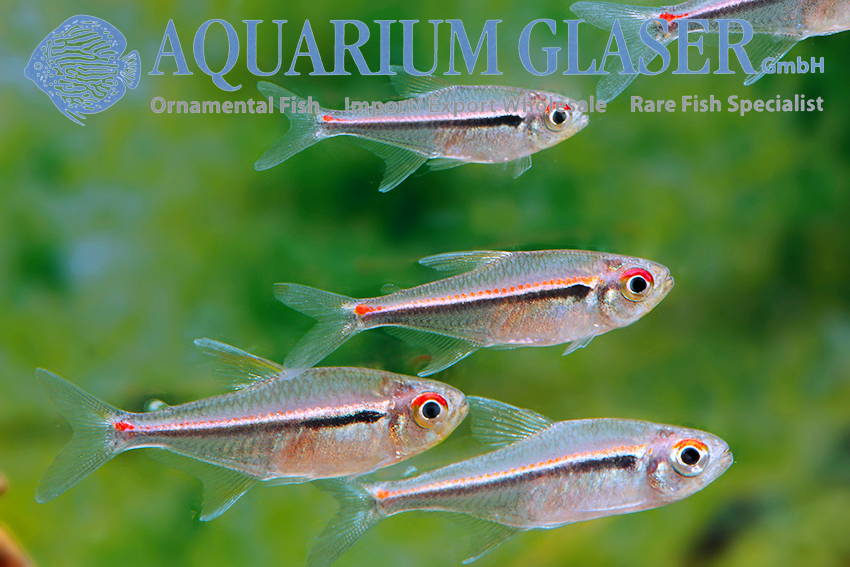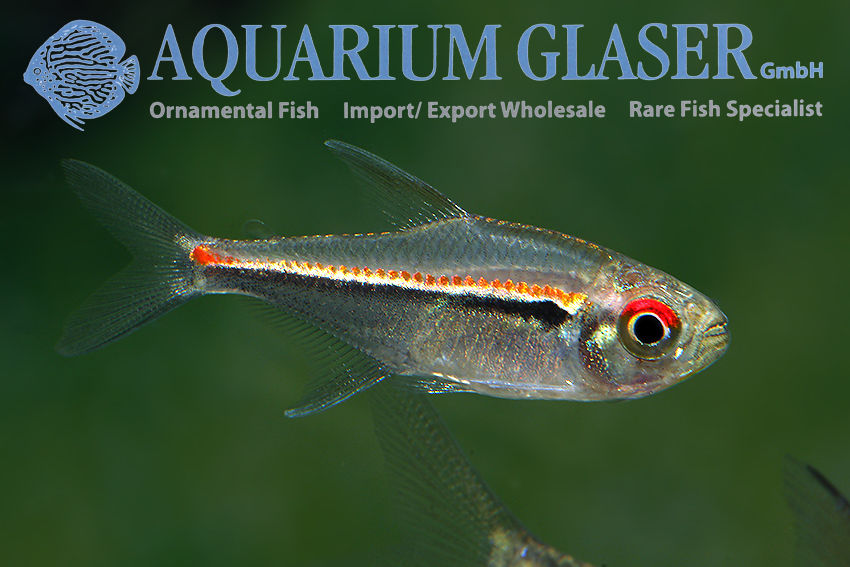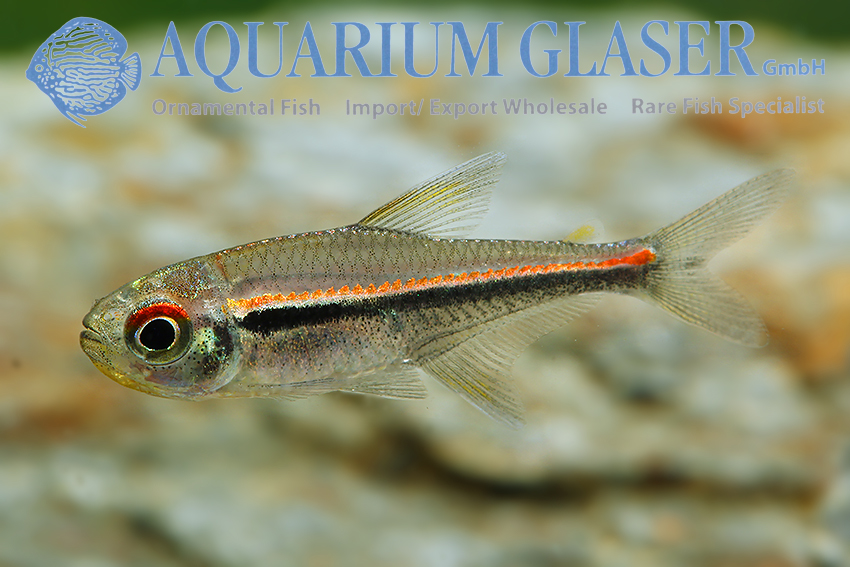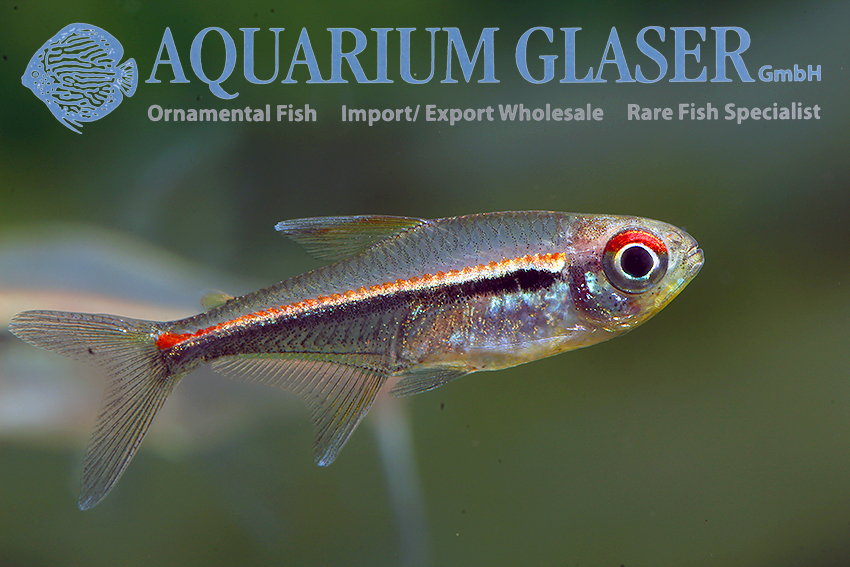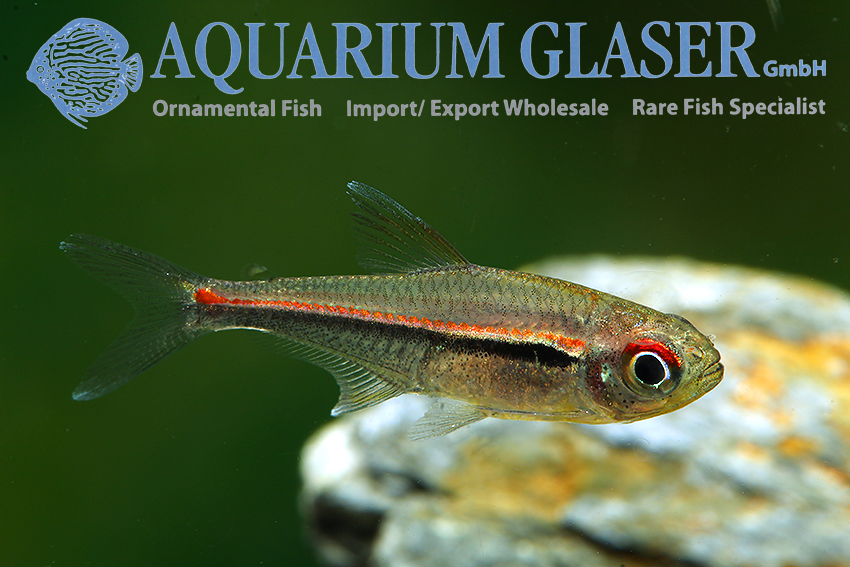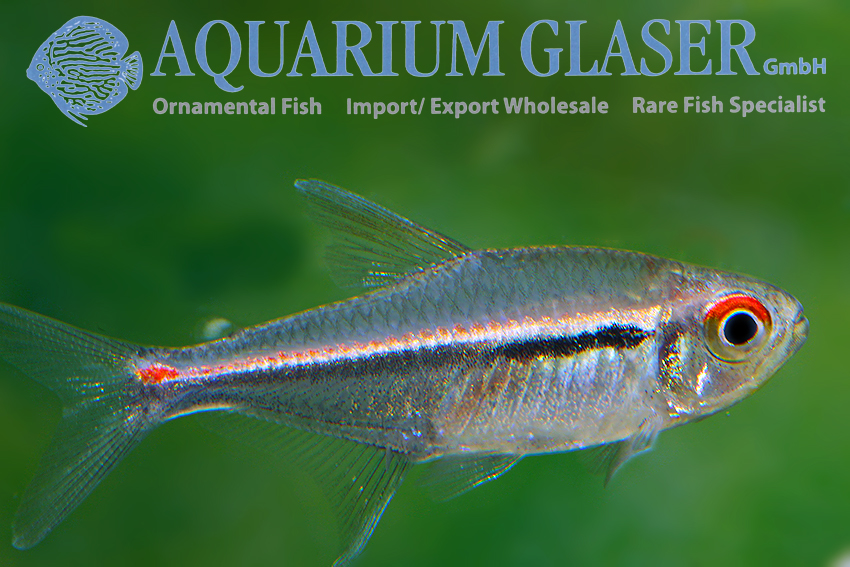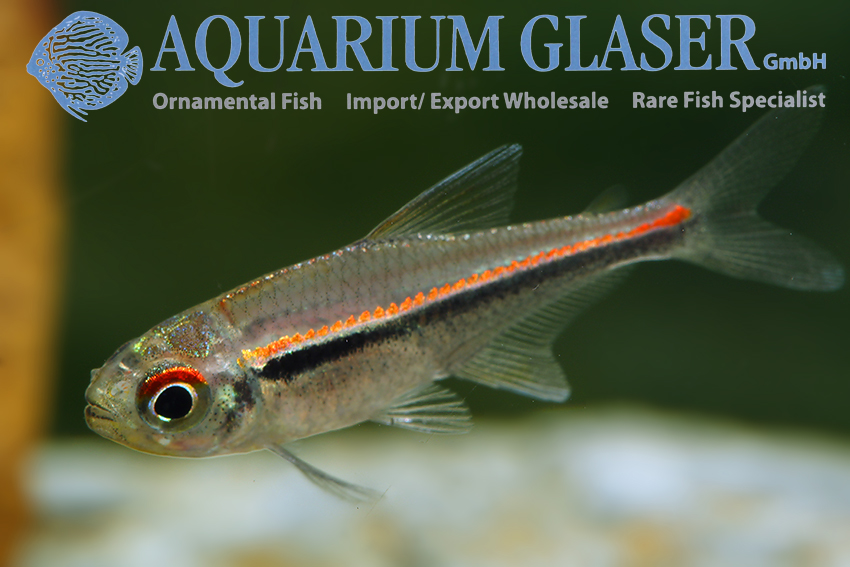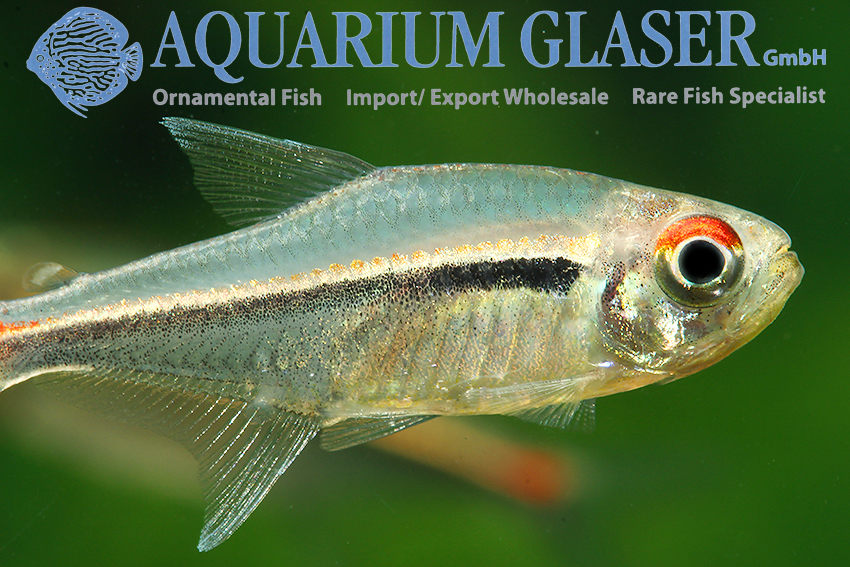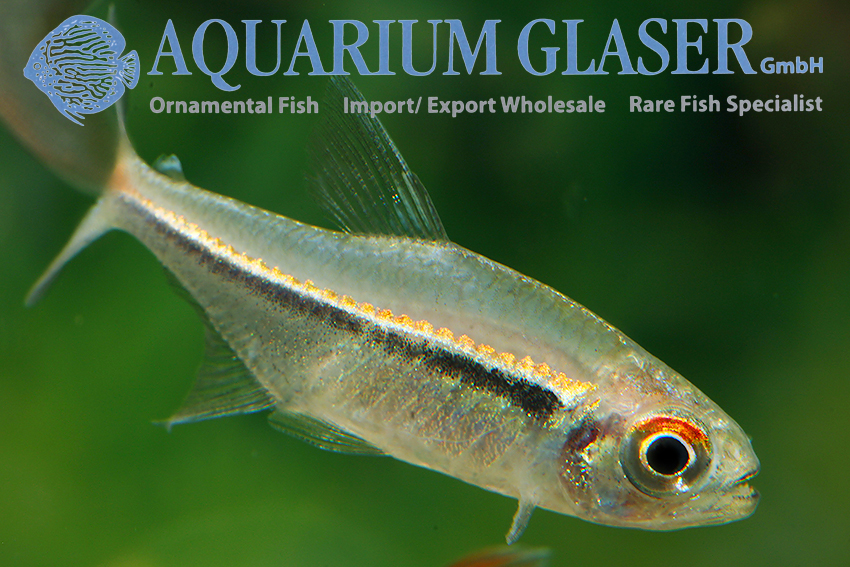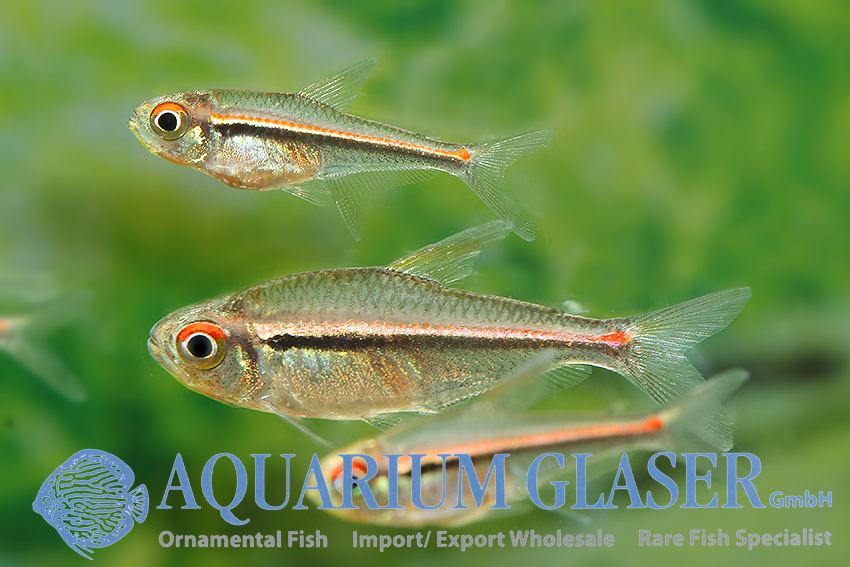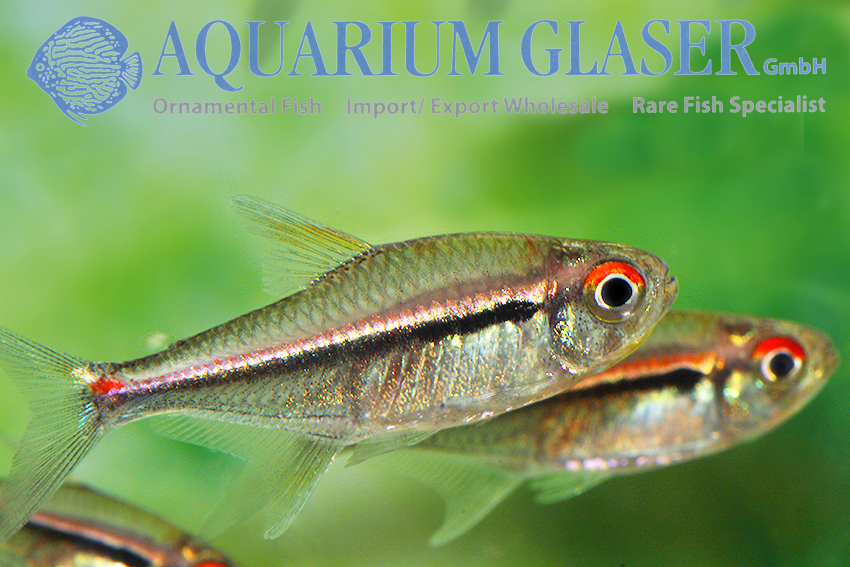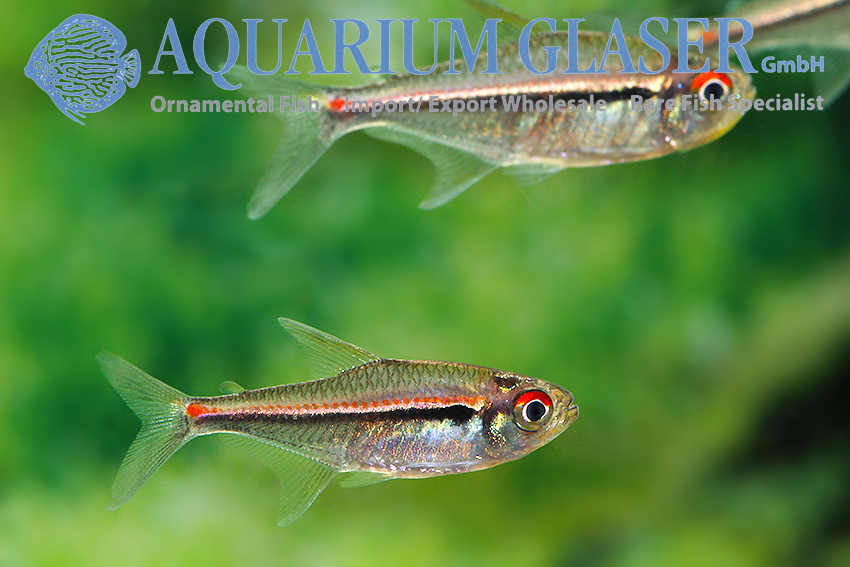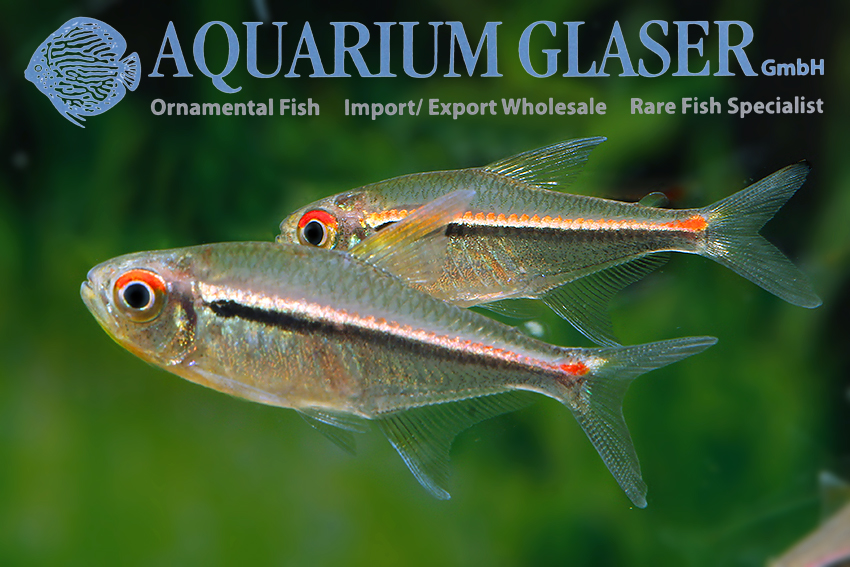Already in 1894 the three-banded flag tetra (Hyphessobrycon heterorhabdus) was described scientifically; the animals on which the description was based came from the Brazilian state of Pará, more detailed information or illustrations are not available. From 1910 and in the 1920s, when the tetras advanced to the most popular aquarium fishes, also three-banded tetras came to Europe; these animals had a red, a white and a black longitudinal band over the entire body length – hence three-banded tetras. According to some sources, they came from the lower Rio Tocantins (whose lower reaches are in Pará), according to other sources from the southern tributaries of the middle Amazon (i.e. Rio Madeira, Rio Tapajós, Rio Xingu). A whole group of species has been named after the three-banded tetra – the Hyphessobrycon heterorhabdus group. They have a black longitudinal band as a common characteristic. From the Hyphessobrycon heterorhabdus group many new species have been described in the last years and some more are already known but not formally described yet; this makes identification not easy.
We have now received very nice animals of this group with the locality Apeú, whereby it is not specified whether this means the district of the large city Castanhal in Pará or the small river Apeú, which flows through the district of the same name, but this forgives nothing. Freshly arrived the animals showed only two stripes, one light and one black, which is why we first determined the species as Hyphessobrycon agulha, but after a few days of acclimation red colored scales were also visible above the light longitudinal band. We are now of the opinion that this is indeed the “true” H. heterorhabdus, while the central Amazonian form mentioned in the old literature probably belonged to the species Hyphessobrycon sateremawe described only last year (2020). H. sateremawe differs from H. heterorhabdus by a much wider black longitudinal band.
For our customers: the animals have code 261103 on our stocklist. Please note that we supply exclusively to wholesalers.
Text & photos: Frank Schäfer





